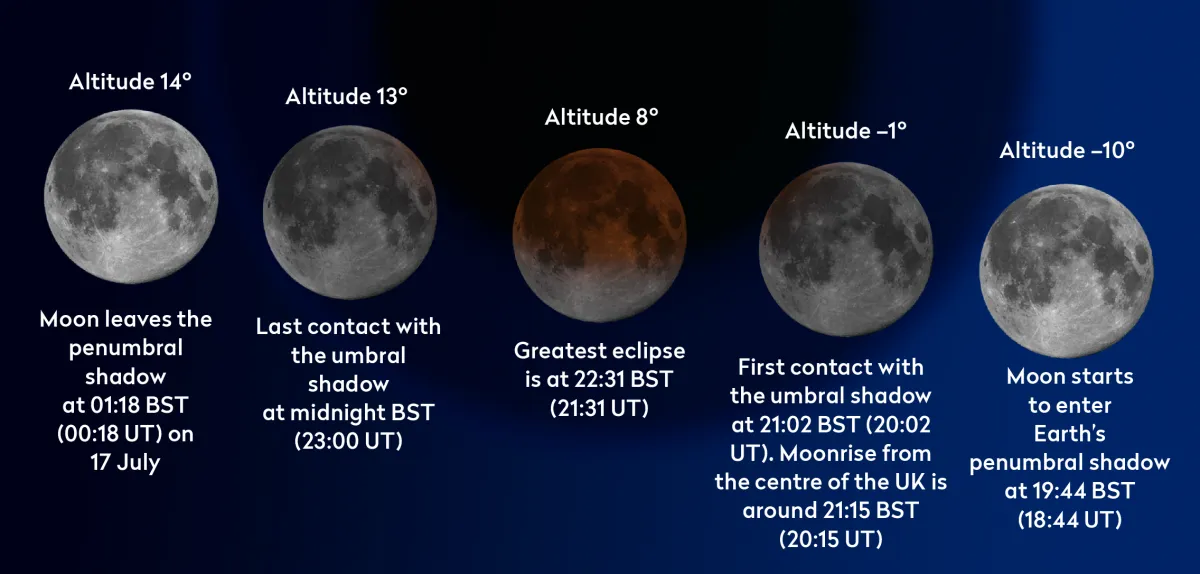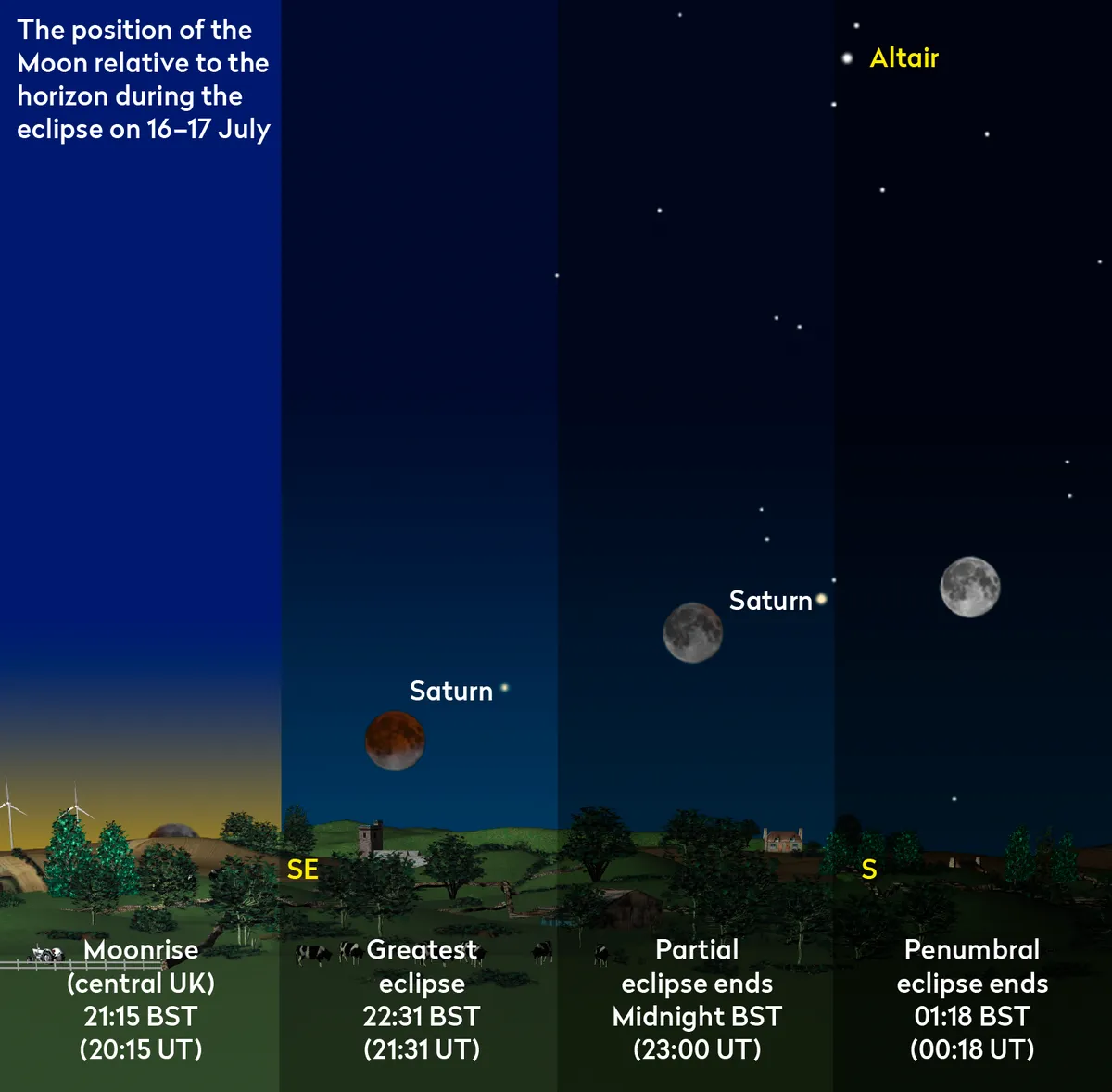The 16 July partial lunar eclipse will begin before the Moon has risen.The Moon makes its appearance above the southeast horizon around 21:15 BST (20:15 UT), but this time varies slightly depending on your location.
Timing favours the southeast and those living in this part of the country may get to see the Moon rise just before Earth’s dark umbral shadow begins to cross its disc.
The visibility of even a full Moon may be very compromised when low down.This depends on the clarity of the atmosphere at moonrise.
Often the Moon only becomes visible when it has climbed a degree or two above the horizon.
What is a lunar eclipse?
A lunar eclipse occurs when the Sun, Earth and the Moon are aligned (known as syzygy), with Earth in the middle.
Earth blocks direct sunlight from reaching the Moon, and the only light that hits the lunar surface has passed through Earth’s atmosphere.
Light passing through the atmosphere is refracted, and this causes the Moon to appear reddish as a result.
During a total lunar eclipse the entire Moon will appear red, but during a partial eclipse just a portion will appear red.
As visibility improves with altitude it’ll be evident that it’s the Moon’s northwest portion being covered by Earth’s dark umbral shadow.
This eclipse has a magnitude of 0.65, which means that at the point of greatest eclipse (22:31 BST, 21:31 UT) the widest part of the umbral shadow stretches across 65% of the Moon’s diameter.

As luck would have it at this size of coverage, the Moon will look like it’s exhibiting a regular crescent phase.
However, for those familiar with the appearance and monthly phases of the Moon, its appearance will feel a little odd.
The rise time of the full Moon occurs as the Sun is setting in the opposite direction.
Consequently, it will take a while for the sky to properly darken. As it does and the eclipse progresses, so visibility will improve.

The umbral shadow leaves the Moon’s disc at midnight BST (23:00 UT) as the Moon is approaching its most southerly position in the sky, and consequently its highest altitude above the horizon.
The planet Saturn can be seen around 8° west of the Moon, with brilliant Jupiter around 30° to the west of Saturn.
Pete Lawrence is a regular presenter on The Sky at Night.
